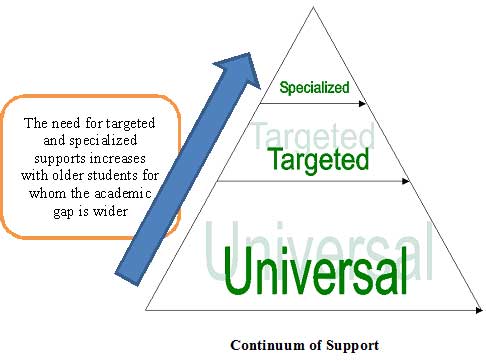
This section gives particular attention to English Language Learners who have arrived in Canada at an older age (grade 4 and higher) with a background of little or no previous schooling, and little or no literacy or numeracy in their first language. Significant gaps in students’ academic knowledge require versatile instructional strategies and differentiated interventions beyond those available through general ESL/ELL support.
In this section, you will find ideas to support appropriate programming for these students. Programming ideas provides an overview of research and programmatic exemplars. Classroom Supports identify essential skills for “survival”, English Language Development, and literacy and numeracy development, and academic “catch-up.” English Proficiency Benchmarks provide a tool for assessing growth and planning instruction in listening, speaking, reading and writing. Sample Units provide examples of cross-curricular English Language Development mini-units.
For programming ideas for pre-K to Grade 3 learners, go to the Young Learners area of this website.
For programming ideas related to specific classroom practices supportive of socio-emotional development, go to the Classroom Strategies section of this website.
The ideas regarding best practices in programming acknowledge a continuum of support depending on students’ learning needs which may be provided in an inclusive universal classroom or through targeted interventions or specialized program.



